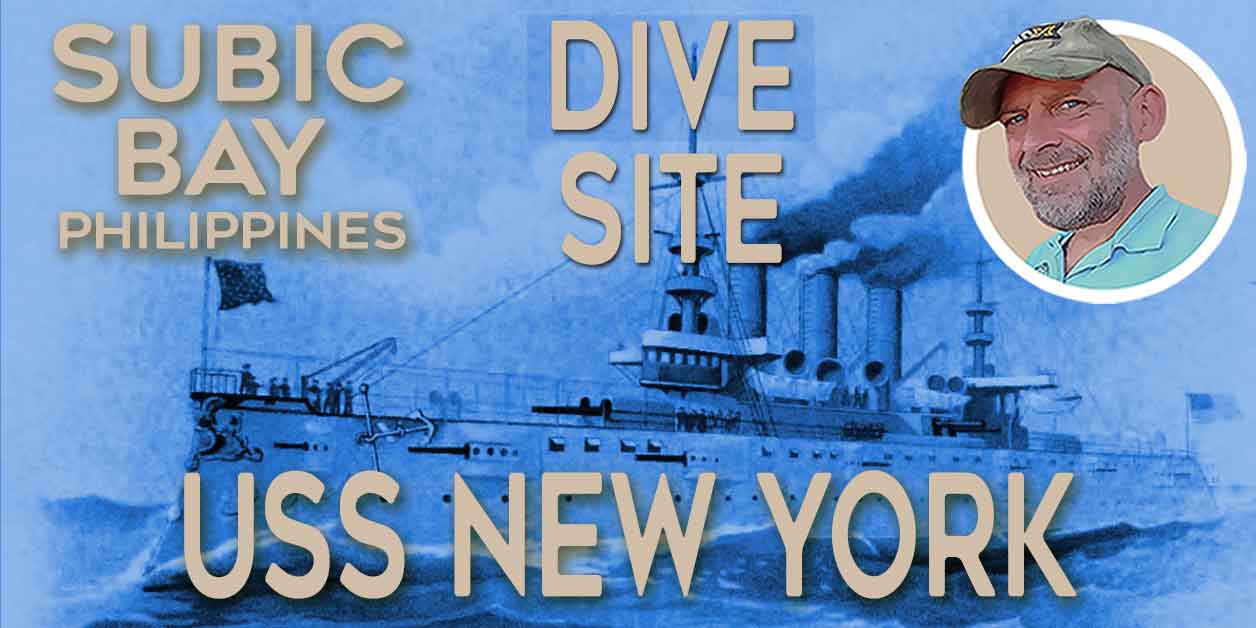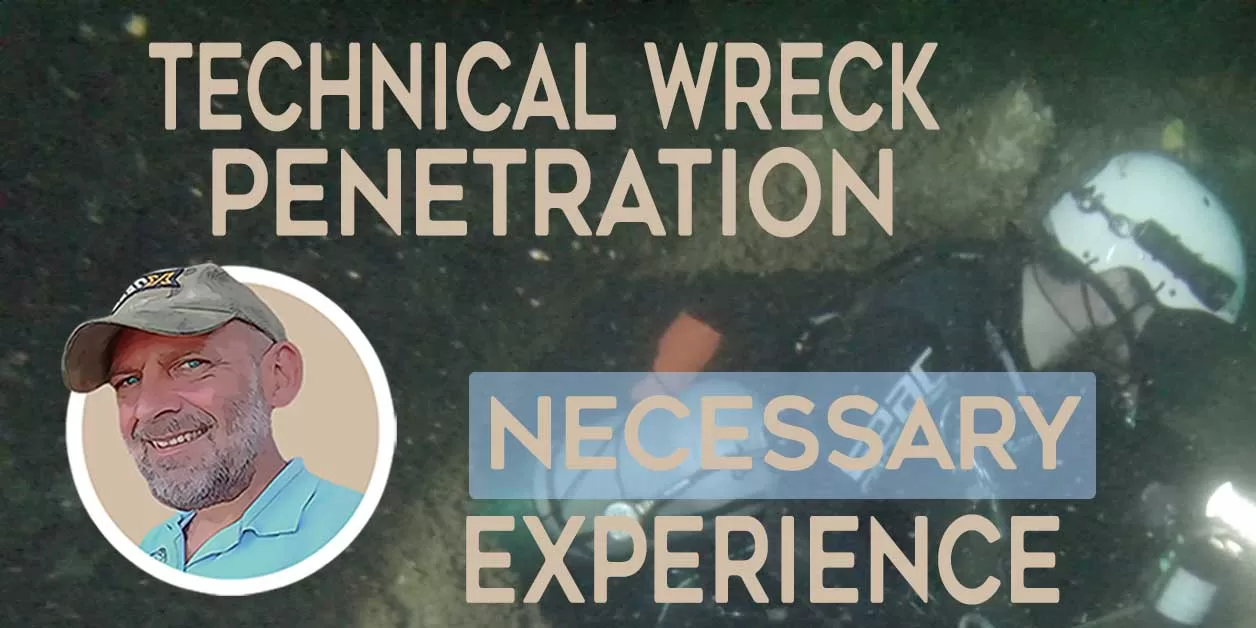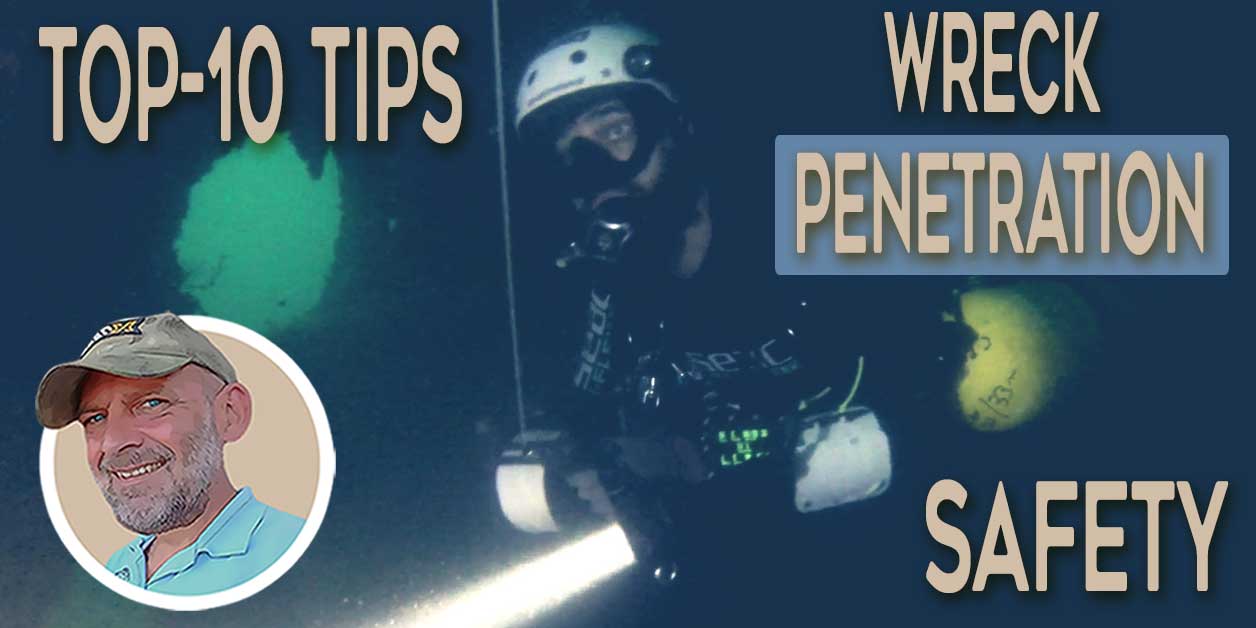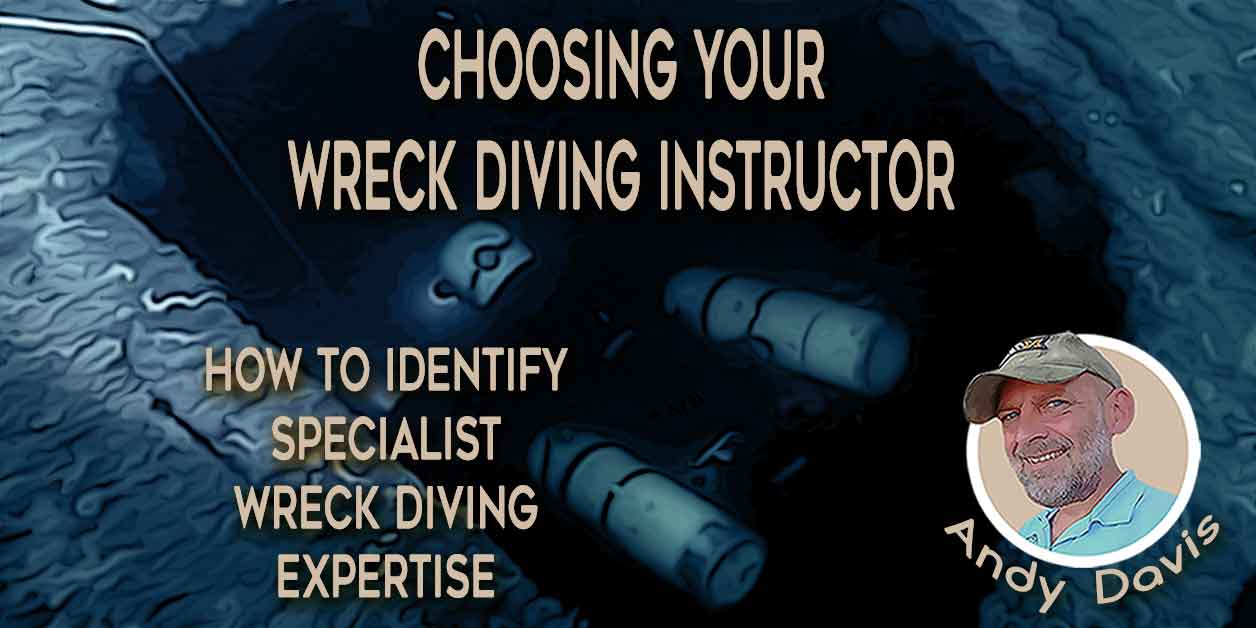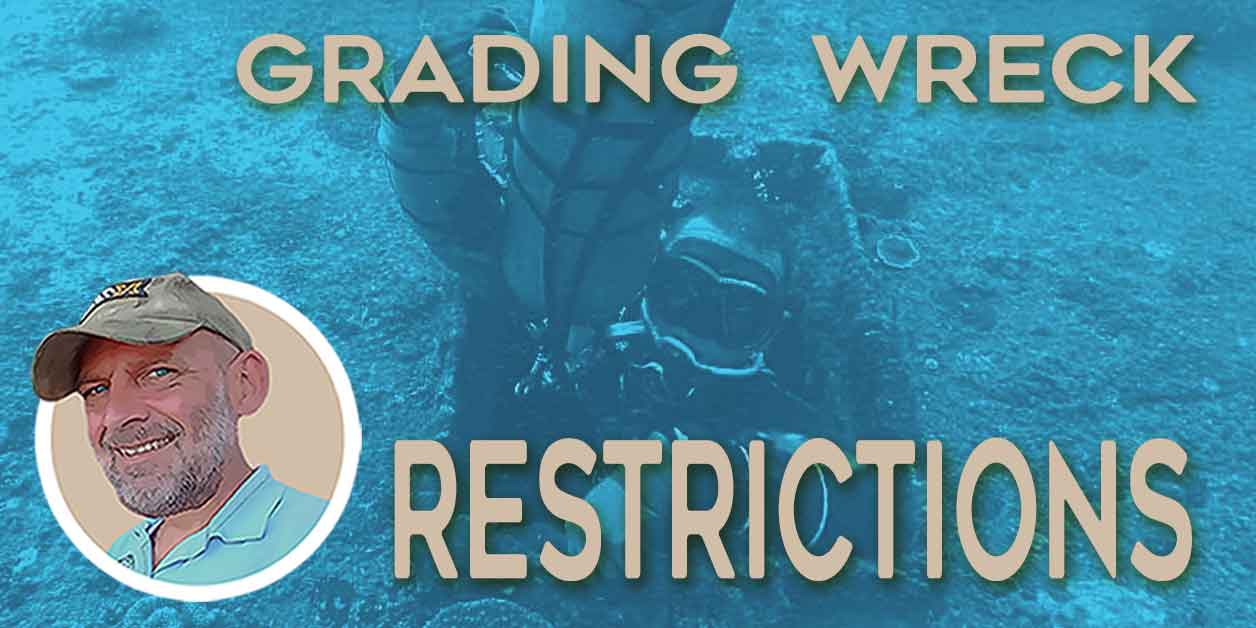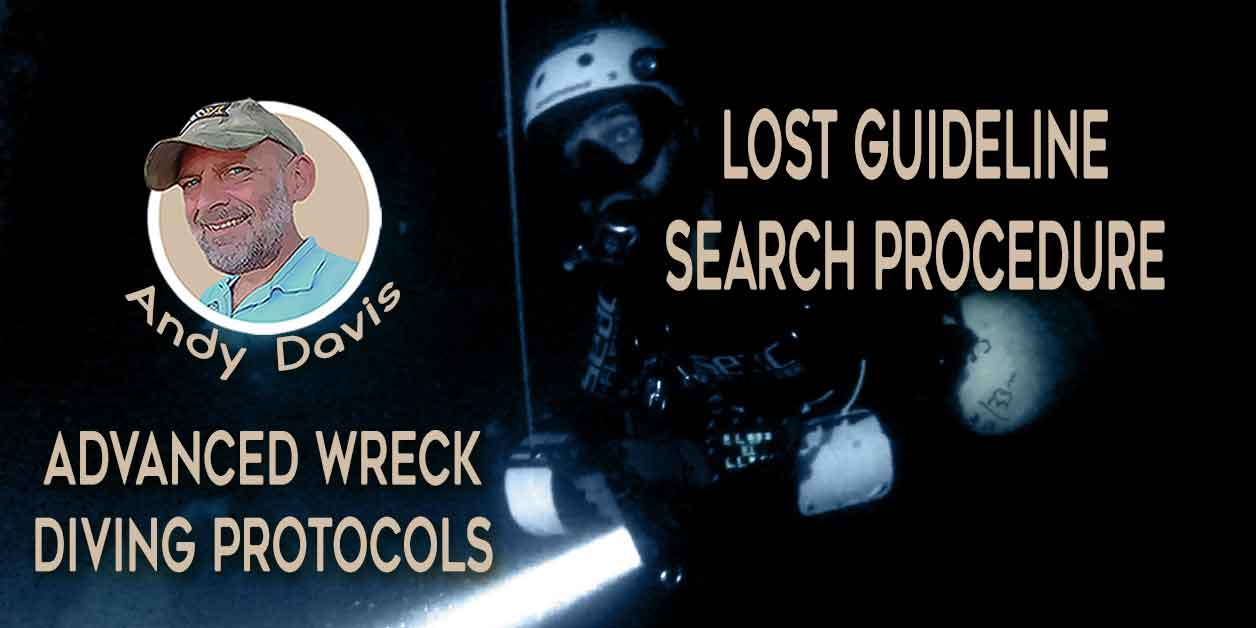The Tabby Aircraft Wreck – Subic Bay
Diving the Showa Nakajima L2D Tabby
One of five aircraft wrecks in Subic Bay, I identified the Tabby aircraft wreck back in 2013. The wreck lies inverted on a sandy bottom at 45m/150ft, with the engines and propellers torn off (one set is lying on the seabed close nearby), the wheels are raised in flying position and the cockpit is mangled and openly accessible to view after impact with the sea floor.
2D Tabby aircraft wreck map
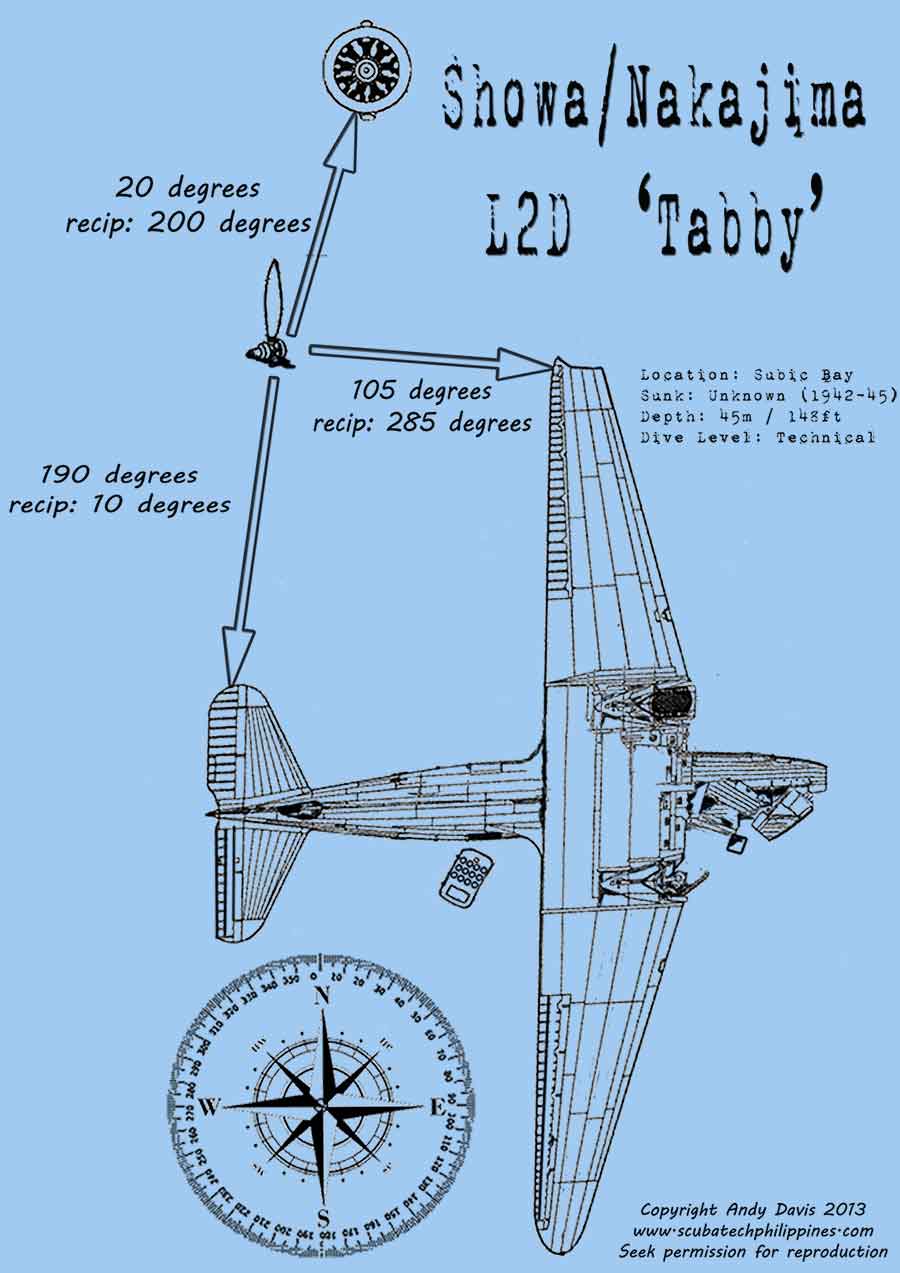
Identifying the Tabby aircraft wreck
The wreck identification required some extensive research because it is a variant of a C-47 Skytrain (DC-3 Dakota). I spent weeks looking for reports about a crashed C-47, and it was only when I enlisted the help of an aviation enthusiast forum that I discovered the Japanese air force made these aircraft under license prior to WWII.

It was the distinctive tail cone that first allowed wreck identification. The L2D Tabby has a conical tail cone, whereas the C-47 has a wedge-shaped tail. Subsequently, we discovered and identified a Mitsubishi Kinsei radial engine lying close to the wreck; providing conclusive evidence that this was a Japanese air force wreck.
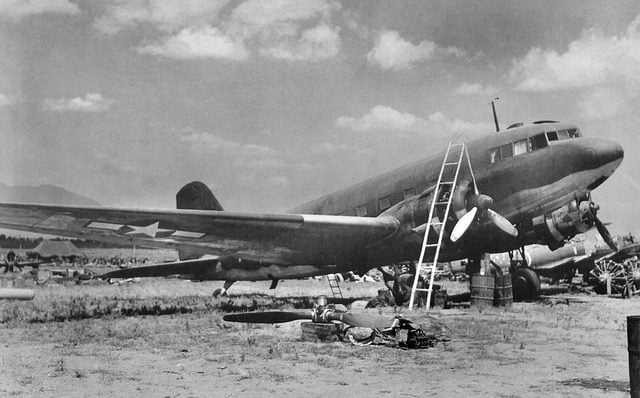
With all the evidence considered, it was clear that this aircraft wreck was a Showa-Nakajima L2D Tabby. It is a wonderful piece of military history to dive.
Photos of the Tabby aircraft wreck

The front landing gear on the port side is partially recessed under twin wing-mounted engines. The starboard wheel is significantly more damaged – hanging at 90 degrees off the wreck. Both engines forward of the wheels were torn free on impact. The wheel hub is not a standard C-47 issue, which was another clue towards the Japanese air force designation.
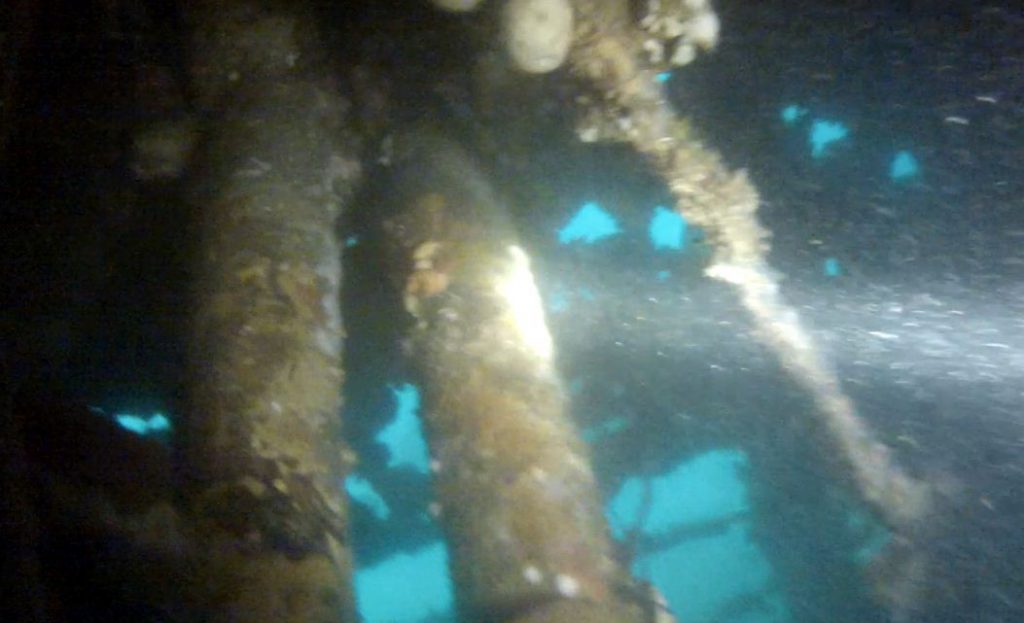
Twin ‘tubes’ towards the rear of the cabin area vent out of the lower fuselage. I don’t know what these are; flare chutes for anti-submarine operations? Further research on these may differentiate the aircraft variant and role. The cabin is divided into three compartments by bulkheads; with doorways on the starboard side of the cabin.
The use of multiple bulkheads in the primary cabin is another indicator that the wreck is a Japanese L2D Showa. Very few C-47 or DC-3 sub-divided the cabins.
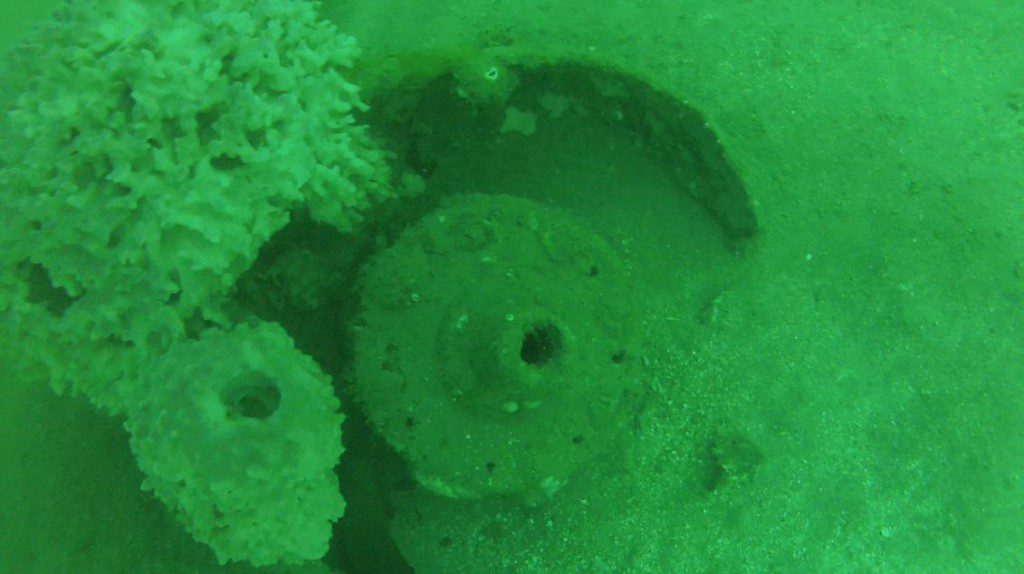
Detail of the propeller hub. It is a three-bladed prop. One prop stands proud of the sea floor, and the other two are buried beneath the sand. It lies about 8 meters behind the main wreck, near to a chunk of engine. Evidence that water impact tore the engines free.
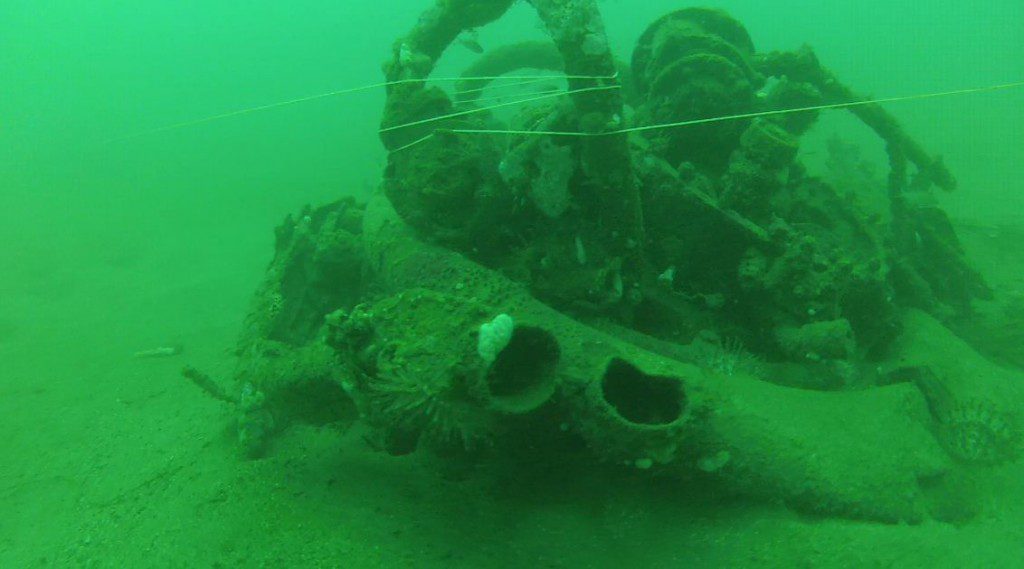
Forward part of the engine block, located near the wreck and propeller. It was identified as a Mitsubishi Kinsei 51/53 radial engine.
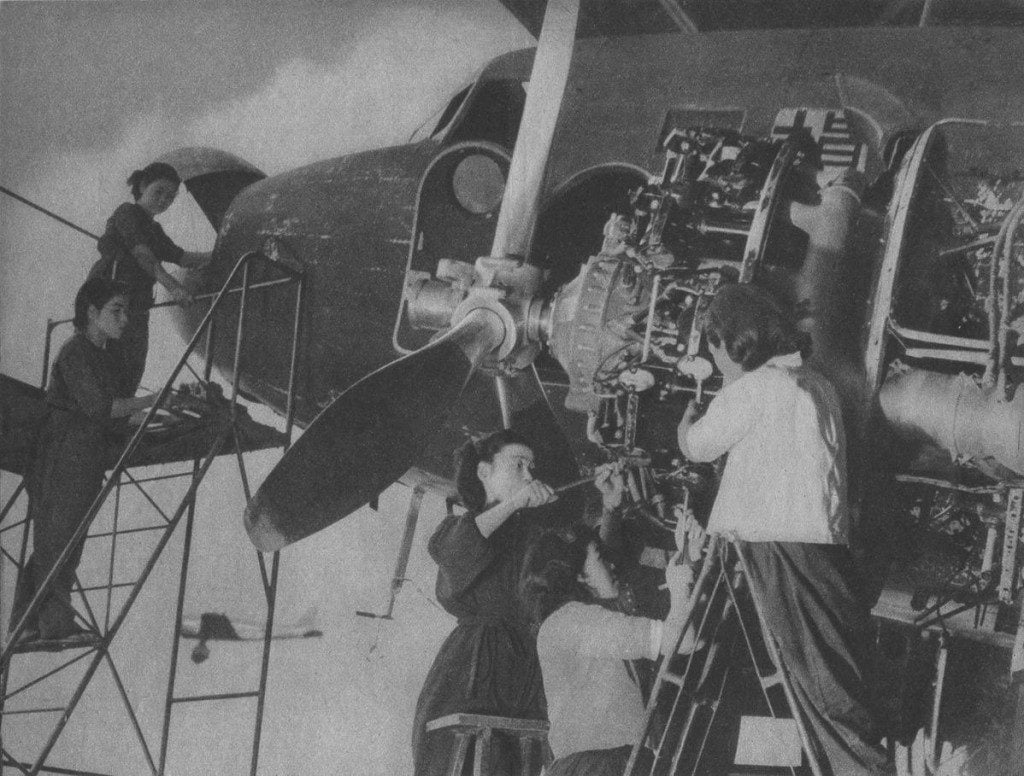
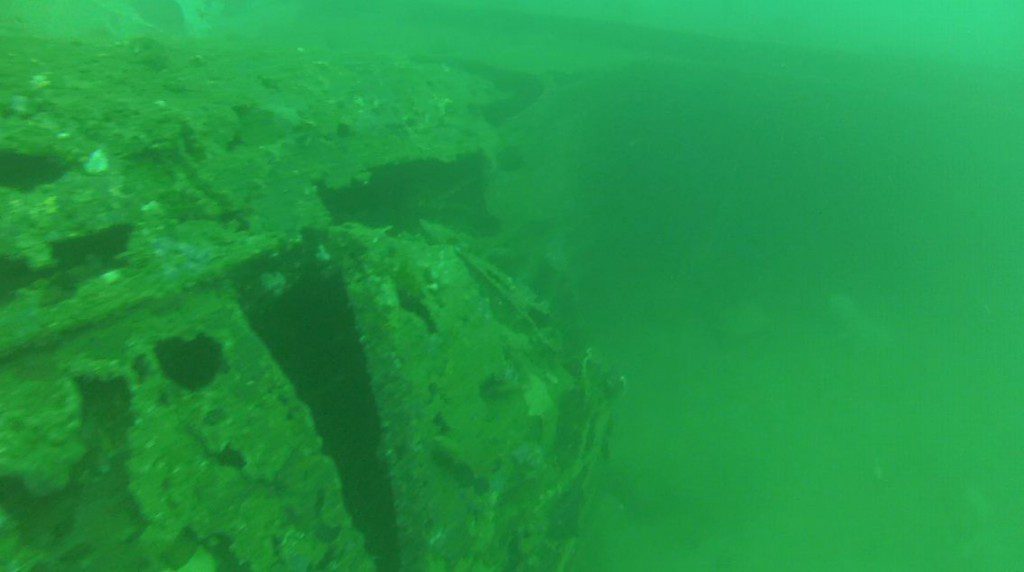
The main passenger door on the port side has separated from the wreckage. Most C-47 had a large cargo door, in contrast many L2D ‘Tabby’ had a smaller passenger door. The door has a small window/port in it (very bottom). This is also consistent with the Japanese variants – some of the ports were used for mounting a self-defense machine gun.
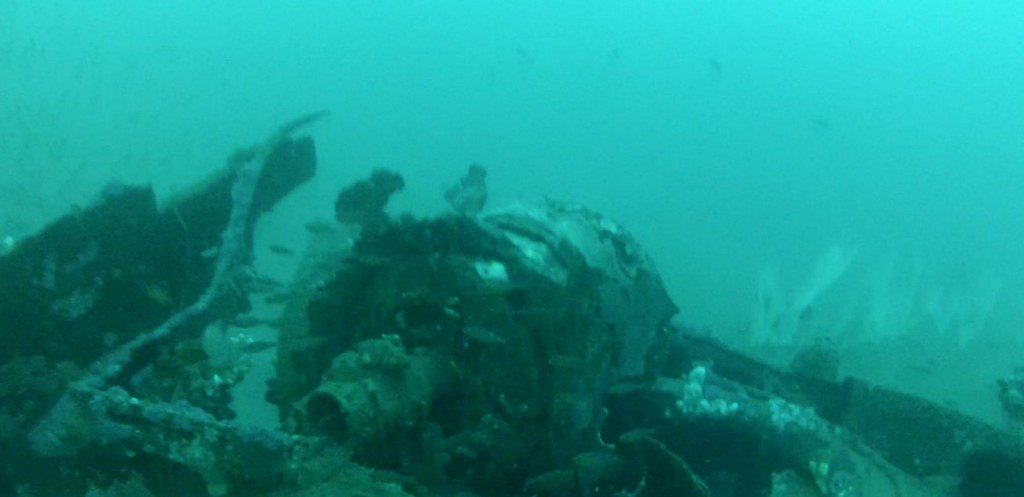
Underside view of the starboard engine and landing gear (looking rear to front). This section of the aircraft was very tangled – indicating significant damage upon impact.
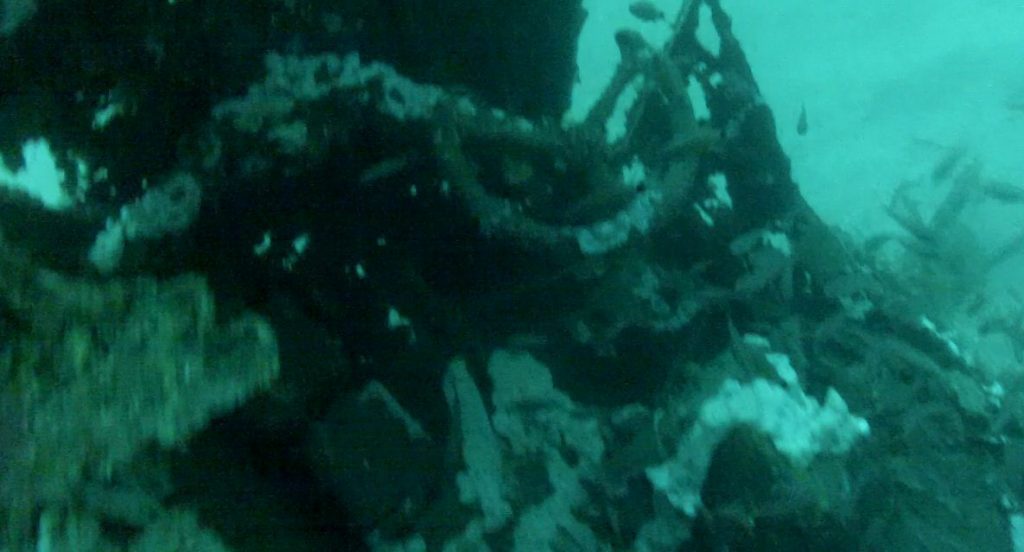
Pilot’s control stick (top-middle) with rudder pedals underneath. You can see the ‘cabriolet’ result of damage to the cockpit.
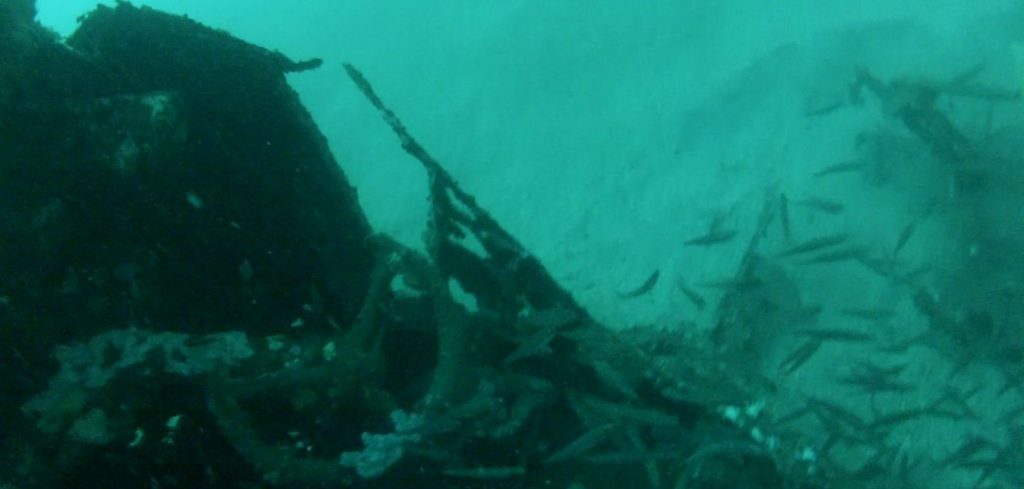
The co-pilots control stick (bottom-left). You can appreciate the damage to the cockpit… ripped open and twisted through 90 degrees.
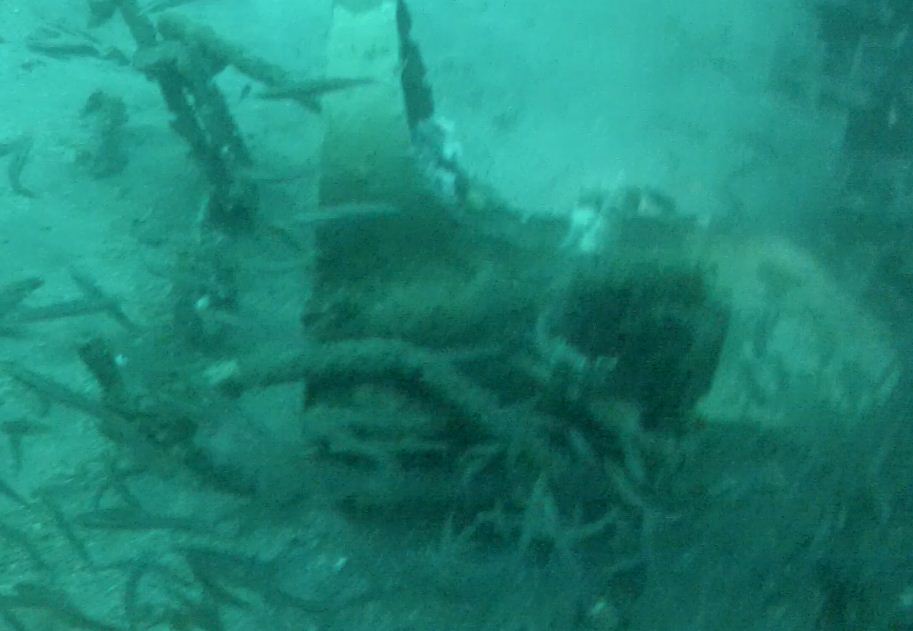
The co-pilot’s seat. It was torn from the aircraft and lays on the sand next to the cockpit.
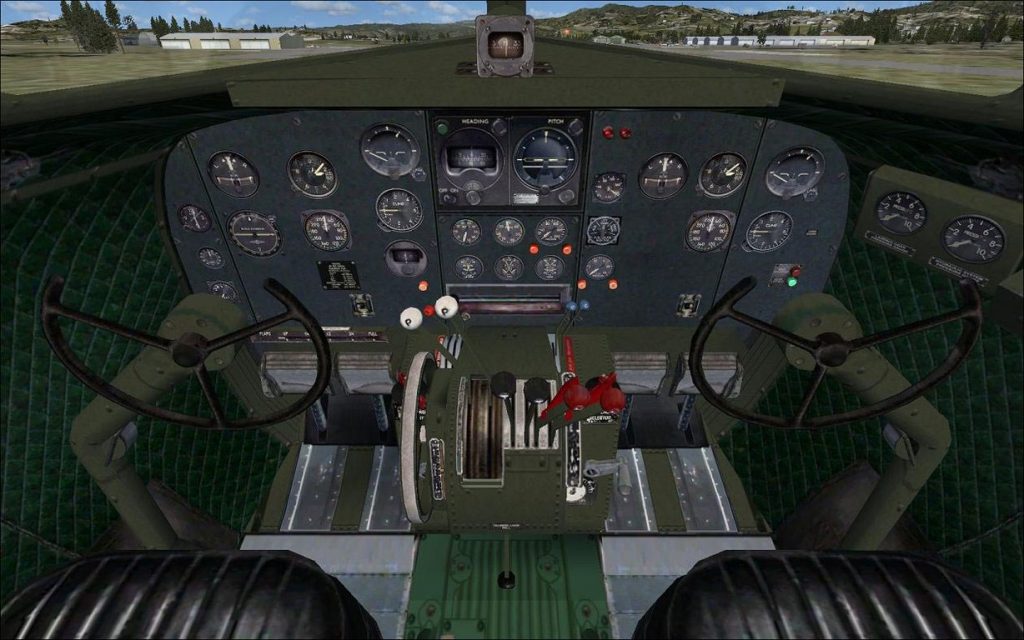
How the C-47 Skytrain cockpit should look…
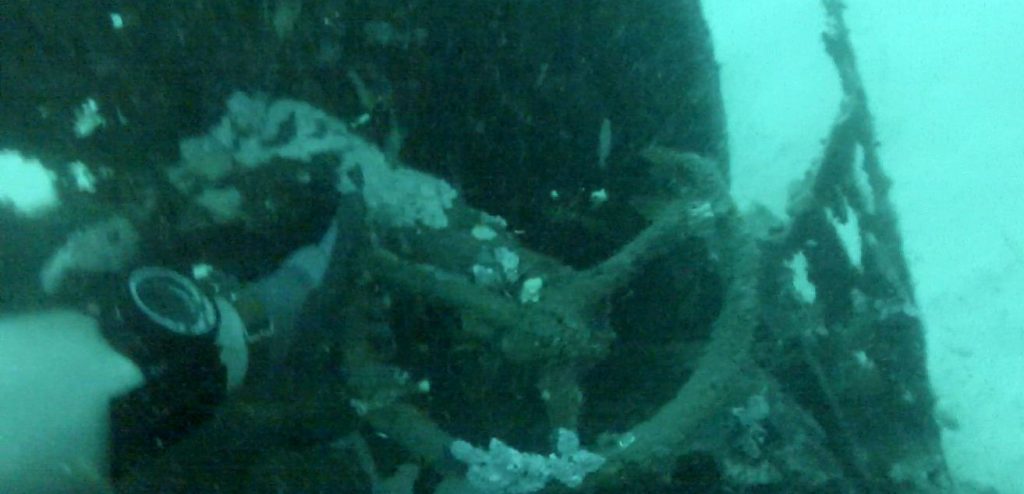
A closer view of the pilot’s control wheel.
See this page for more photos of the Tabby aircraft wreck in Subic Bay:
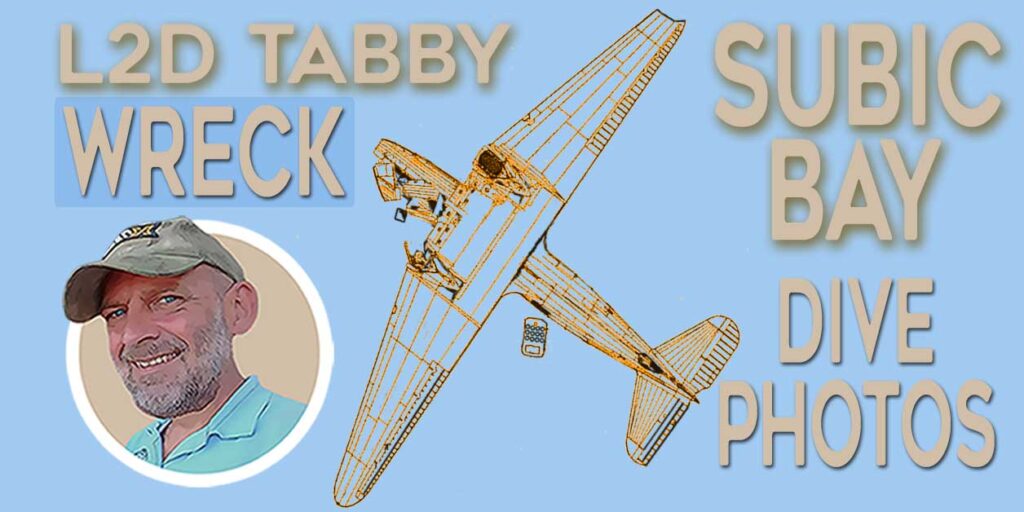
About The Author

Andy Davis is a RAID, PADI TecRec, ANDI, BSAC, and SSI-qualified independent technical diving instructor who specializes in teaching sidemount, trimix, and advanced wreck diving courses.
Currently residing in Subic Bay, Philippines; he has amassed more than 10,000 open-circuit and CCR dives over three decades of challenging diving across the globe.
Andy has published numerous diving magazine articles and designed advanced certification courses for several dive training agencies, He regularly tests and reviews new dive gear for scuba equipment manufacturers. Andy is currently writing a series of advanced diving books and creating a range of tech diving clothing and accessories.
Prior to becoming a professional technical diving educator in 2006, Andy was a commissioned officer in the Royal Air Force and has served in Iraq, Afghanistan, Belize, and Cyprus.
In 2023, Andy was named in the “Who’s Who of Sidemount” list by GUE InDepth Magazine.
Purchase my exclusive diving ebooks!
Originally posted 2013-03-29 22:25:56.








